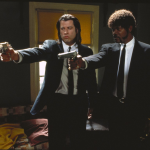Original music or pre-existing music?

Nowadays, it is quite rare for TV magazine producers to have the budget to compose music with real instrumentalists (though there are exceptions in the fields of TV movies and documentaries). Most of the time, they resort to using stock music or hire a one-man-band composer to create their music. The composer working with DAW (Digital Audio Workstation) has become a magician, mastering all musical forms and styles. If you need pop music, they will compose pop; if you need a symphonic orchestra, you’ll get a symphonic orchestra. Traditional music? No need to search far—computers also provide all the chengs, sitars, koras, biwas, and drums of the world. And it’s no longer the producer paying for the orchestra; instead, the composer invests month after month in equipment, computers, sound cards, quality speakers, and increasingly sophisticated and efficient sampled instruments.
The Composer Has Become a One-Man Band
But they wear several other hats, which they switch depending on the various stages of their work. First and foremost, they are musicians. Many have spent years at a conservatory or music school, and even if not, they’ve spent countless hours mastering their instrument—making it scream, shout (along with their neighbors)—and gradually making it sing. Typically trained from a young age, if one were to count the hours spent learning, it would quickly add up to the equivalent of a Ph.D. (Bac +10).
Once their budget allowed, they bought a computer with a sound card, a microphone, and an amp. That’s when two new learning curves began: becoming a computer technician and a DAW composer. Hours were spent in their room reading (often in English) software manuals, wrestling with the computer, handling updates, and troubleshooting breakdowns. Sleepless nights were spent repairing and adjusting the machines, leaving little time to practice their instrument.
Once the software was mastered, they found themselves standing at the threshold of an extraordinary world. Suddenly, every musical toy on Earth was within reach, just for them. And while that may seem thrilling, it’s also overwhelming. Where to begin? Which instrument to use when you’ve spent 15 years just playing guitar or piano? And how to make the most of these machine-based instruments?
That’s when their fourth and fifth educational journeys begin: learning to arrange and breathe life into synthetic instruments. If the composer is fortunate enough to have the status of a freelance artist, they might be able to afford formal training. Otherwise, they embark on the long, self-taught path—tinkering, experimenting, spending evenings on forums, searching for information wherever they can find it, making attempts, retrying, and retrying again until it sounds right.
Gone are the days when pioneers of electronic music would imitate whales or seagulls on layers of nebulous soundscapes. Today, composers are expected to reproduce the sound of an orchestra, ensuring it’s convincing and doesn’t reveal the electronic disembodiment of those virtual instruments lost in the vast digital realm. And make no mistake—just because they’ve finally acquired the full kit of a virtual composer doesn’t mean they can rest on their laurels.
Software is constantly evolving, with new instrument libraries being released regularly, making older versions obsolete, or at best, complementary. Composers need to stay vigilant, continuing to invest financially and learn how to use the new sound libraries they purchase.
Each one masters their setup in their own way. Everyone has their own tricks to make a particular instrument sound just right—learning to mask a virtual oboe whose sound has yet to achieve real-world suppleness, while still keeping it within the ensemble, or combining instruments from different libraries to improve sound quality—along with many other secrets I won’t reveal here.
A Constantly Evolving Profession
But that’s not all. There remains one final skill composers must master, and it’s no small feat, as it typically requires three years of study: becoming a sound engineer. It’s not enough to know how to play, compose, arrange, conduct an orchestra, or operate computers—they also need to know how to record and mix.
This involves selecting the right microphones and, during mixing, placing the instruments in space, mastering the balance between them—a true art form that requires focusing on a different type of listening, which is not always easy to master. When you’ve been glued to the screen, absorbed in composition for days, it’s easy to lose perspective, no longer hearing with the fresh ears of a sound engineer who has just recorded performers and knows their mics, spaces, and music.
It’s crucial to rediscover the piece as if it were someone else’s to hear it with fresh ears. But composers are also expected to do this. Mastering so many different techniques and the quality of today’s samples have made the new generation of composers professionals of a new era. The image of a composer with a blank page and a pencil is far behind us.
However, that doesn’t mean they’ve become mere tech-savvy computer geeks. Far from it. Their primary strength remains their creative power, but now this art passes through mastering the machine. It becomes a new musical instrument they must know as well as their primary instrument because it’s through it that they can best showcase their creativity.
As for us, while we’ve integrated these new parameters of musical creation, we continue to work with real-life performers, whose art and sensitivity enrich the virtual instruments born from computers. The music we produce thus regains the emotional richness of harmonics created by real instruments and the human interpretation.

